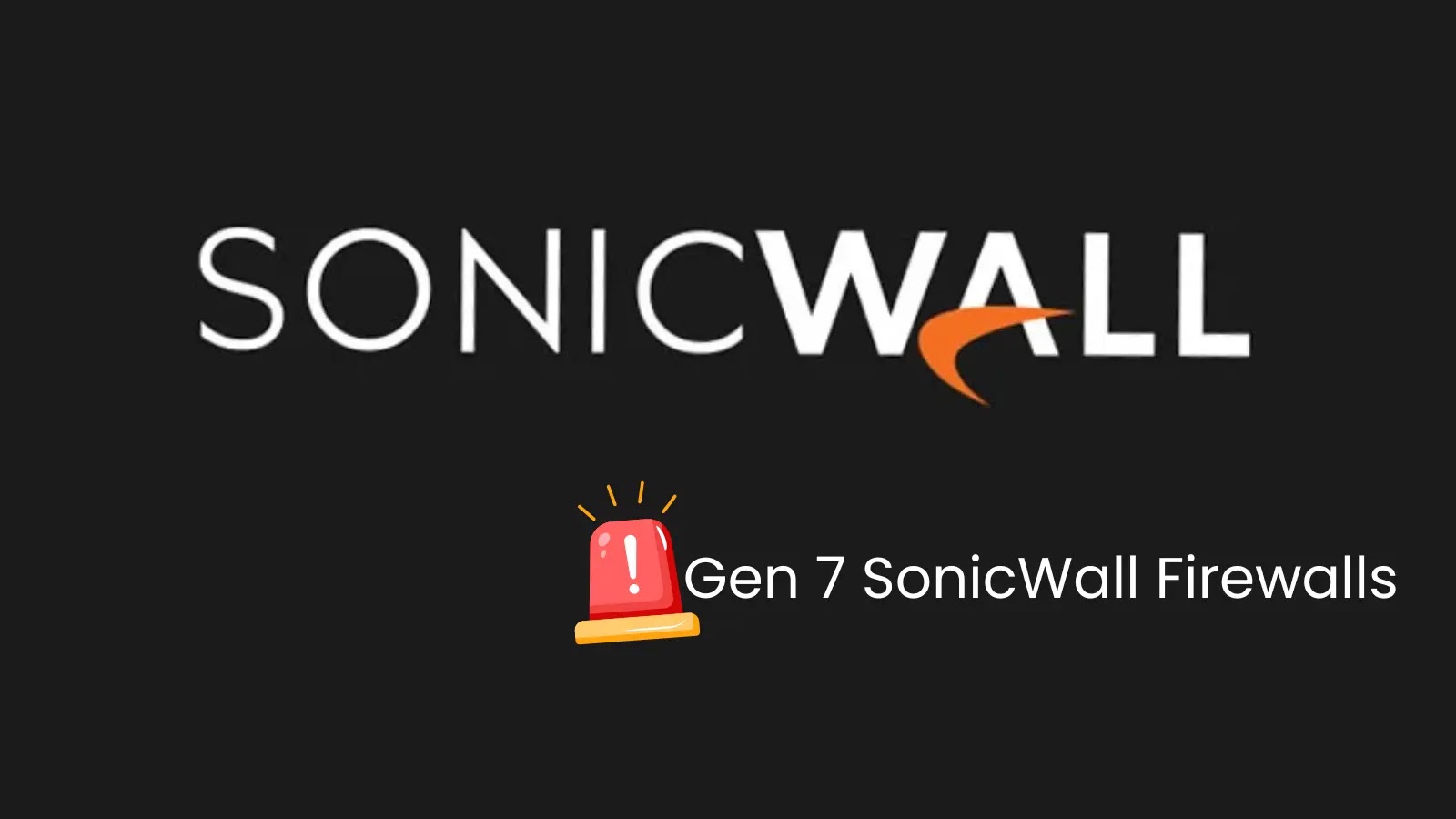
SonicWall Warns of Escalating Cyberattacks Targeting Gen 7 Firewalls in Last 72 Hours
The digital landscape is a constant battleground, and for organizations relying on critical network infrastructure, vigilance is paramount. In a significant development, SonicWall has recently issued an urgent security advisory detailing a severe escalation in cyberattacks targeting its Gen 7 SonicWall firewalls. This surge, witnessed over the past 72 hours, highlights a targeted effort to exploit crucial security components, placing numerous networks at heightened risk. As cybersecurity analysts, understanding the nuances of these threats is not just an academic exercise; it’s a necessity for proactive defense.
Understanding the Escalating Threat to SonicWall Gen 7 Firewalls
SonicWall’s recent alert underscores a worrying trend: a significant increase in malicious activity specifically targeting their Gen 7 series firewalls. These devices are cornerstones of network security for countless businesses, providing critical protection against external threats. The concentrated nature of these attacks, observed over a mere three-day period, suggests a coordinated effort by malicious actors to breach a widely deployed security solution. This escalation points to a potential zero-day or a highly effective exploitation technique being actively leveraged in the wild.
The SSLVPN Vulnerability: A Critical Attack Vector
Central to these unfolding cyber incidents is the exploitation of the Secure Sockets Layer Virtual Private Network (SSLVPN) feature. SonicWall explicitly states that the attacks appear to be focused on devices where this feature is enabled. SSLVPN is a vital component for remote access, allowing users to securely connect to their internal network resources from external locations. Its pervasive use makes it an attractive target for attackers looking to establish a foothold within an organization’s perimeter.
- What is SSLVPN? SSLVPN allows users to create encrypted, secure connections (tunnels) to a private network over a public network, like the internet. It’s widely used for remote work, granting employees access to internal applications and data securely.
- Why is it a target? Due to its nature as an entry point into the internal network, any vulnerability within the SSLVPN implementation can be catastrophic. Exploiting it can grant attackers unauthorized access, enabling data exfiltration, lateral movement, and the deployment of ransomware or other malware.
Attack Vector and Potential Impact
While SonicWall’s investigation is ongoing, the focus on SSLVPN-enabled devices strongly indicates that the attacks are likely exploiting weaknesses in the SSLVPN service itself. This could range from authentication bypass vulnerabilities to remote code execution (RCE) flaws. The precise CVE for this specific series of attacks has not yet been publicly disclosed by SonicWall in the initial alert, emphasizing the urgency and fluidity of the situation.
The potential impact of successful exploitation is severe:
- Unauthorized Network Access: Attackers can gain direct entry into the internal network, bypassing traditional perimeter defenses.
- Data Breach: Sensitive corporate and customer data could be exfiltrated.
- Ransomware Deployment: Once inside, adversaries can deploy ransomware, crippling operations and demanding payment.
- System Compromise: Complete control over the firewall device could be achieved, allowing attackers to reconfigure network security settings, deploy backdoors, and launch further attacks.
Remediation Actions and Mitigations for SonicWall Users
Given the critical nature of these attacks, immediate action is required for all organizations utilizing SonicWall Gen 7 firewalls, particularly those with SSLVPN enabled. Proactive defense is the best defense in such scenarios.
- Disable SSLVPN if not critical: If your organization does not actively use the SSLVPN feature, disable it immediately. This removes a significant attack surface.
- Apply Latest Patches: Continuously monitor SonicWall’s official security advisories and knowledge base for the release of patches or firmware updates. Apply these updates as soon as they become available.
- Review SSLVPN Access Policies: Implement the principle of least privilege for all SSLVPN users. Ensure only necessary personnel have access and restrict access to specific internal resources rather than the entire network.
- Enforce Multi-Factor Authentication (MFA): Mandate MFA for all SSLVPN connections. Even if credentials are compromised, MFA adds an essential layer of security.
- Isolate SSLVPN Access: If possible, place SSLVPN access points on a separate Demilitarized Zone (DMZ) network segment, further isolating them from critical internal infrastructure.
- Monitor Logs Aggressively: Increase the frequency and scrutiny of reviewing firewall logs for suspicious activity, failed login attempts, unusual data transfers, or configuration changes.
- Deploy Intrusion Prevention Systems (IPS): Ensure IPS policies are up-to-date and actively blocking known malicious patterns and behaviors associated with VPN exploitation.
Detection and Analysis Tools
To aid in detecting potential compromise or vulnerabilities, security professionals can leverage various tools:
| Tool Name | Purpose | Link |
|---|---|---|
| Nmap (Network Mapper) | Port scanning and service detection, identifying open SSLVPN ports. | https://nmap.org/ |
| Metasploit Framework | Exploitation and post-exploitation (for testing and red teaming purposes, with proper authorization). | https://www.metasploit.com/ |
| Wireshark | Network protocol analysis to inspect SSLVPN traffic for anomalies. | https://www.wireshark.org/ |
| Security Information and Event Management (SIEM) Systems | Centralized log collection and analysis for anomaly detection. | Varies (e.g., Splunk, Elastic SIEM) |
| Vulnerability Scanners (e.g., Nessus, OpenVAS) | Automated vulnerability detection for known CVEs affecting VPN services. | https://www.tenable.com/products/nessus |
Looking Ahead: The Ongoing Threat Landscape
The rapid escalation of attacks on SonicWall Gen 7 firewalls serves as a stark reminder of the dynamic and relentless nature of cyber threats. Organizations must prioritize continuous vulnerability management, apply patches swiftly, and adopt a “assume breach” mentality. Proactive threat intelligence, such as the advisory from SonicWall, is invaluable for maintaining a robust security posture against emerging and evolving attack vectors. Staying informed and acting decisively are the cornerstones of effective cybersecurity in today’s interconnected world.





